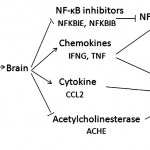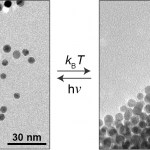inflammation
"Why, oh, why do I have to die in the cause of such crappy science?"
For antivaxers, aluminum is the new mercury.
Let me explain, for the benefit of those not familiar with the antivaccine movement. For antivaxers, it is, first and foremost, always about the vaccines. Always. Whatever the chronic health issue in children, vaccines must have done it. Autism? It’s the vaccines. Sudden infant death syndrome? Vaccines, of course. Autoimmune diseases? Obviously it must be the vaccines causing it. Obesity, diabetes, ADHD? Come on, you know the answer!
Because antivaxers will never let go…
The opening session was great!
By Tatsuo Yamashita (Flickr: ワンセグで紅白をみます 2012/12/31) [CC BY 2.0 (http://creativecommons.org/licenses/by/2.0)], via Wikimedia Commons
Eric Hoffman (Children's National Medical Center) presented work on chronic inflammatory diseases in children. He mentioned that while diets high in fats and carbohydrates (i.e. Western diets), obesity and sedentary lifestyles are associated with inflammation and related diseases (ex: asthma, type 2 diabetes), another contributor could be hormones. Kids who stay indoors more often have reduced exposure to …
One day in the future, we may be treating our ailments with microbiotic combinations designed specifically to correct imbalances in our personal microbiomes. We’ll bring our prescriptions on rewritable paper and pay using shimmery optical chips embedded in our cell phone cases or maybe our jewelry. Or we’ll be waiting in our doctor’s office for a simple test of our microbiogenome to see if a light-based nanoparticle delivery treatment is working, while watching iridescent optical displays that change as we move...
These future scenarios (and many more) are all imaginary, but…
The next time you reach into the fridge for a midnight snack – take heed: New research by Weizmann Institute scientists has shown that the time at which you eat your meals might have a profound effect on your liver triglyceride levels. Their research was conducted on mice, but if found to be true for humans as well, it may have clinical implications in the way patients could be treated for fatty liver and other metabolic diseases, which are characterized by abnormally elevated levels of lipids in blood and liver cells.
Our bodies are naturally cued to carry out various biological…
Image from www.123rf.com
A new study published in the American Journal of Physiology presents data suggesting that birds do not carry a specific anti-inflammatory protein critical for keeping inflammation under control in mammals, reptiles and amphibians.
The specific protein is tristetraprolin (TTP). It functions mainly by inhibiting key mediators of inflammation in the body, such as tumor necrosis factor alpha (TNFa). In fact, mice that are missing this protein have chronic systemic inflammation from unchecked TNFa. Moreover, mice missing the protein specifically in myeloid cells develop…
Caterpillars with fungus growing out of their heads. Image of Cordyceps sinensis fungus from http://cordyceps-sinensis-mushroom.blogspot.com/
Whoever thought that a brain-attacking fungus might actually be good for you? This particular type of fungus, cordyceps, is known for attacking and killing caterpillars and can be found in the mountains of Tibet. Touted as a cure for various ailments including cancer, asthma, and erectile dysfunction, it is sold in Chinese markets as the "golden worm" or "Tibetan mushroom" for as much as $50,000 per pound! A new study published in RNA provides some…
This entry is cross posted from the the SITN Flash, a bimonthly publication written and edited by Harvard graduate students. You can find my piece, as well as archives of previous articles written by many graduate students at the Science in the News website.
In 1985, the Centers for Disease Control (CDC) began tracking the prevalence of obesity in the United States. Since then, a clear trend has emerged: obesity is on the rise. The maps below compare obesity levels across the United States in 2004 and 2008:
It's clear that the number of people with obesity is growing, and has been as long we…
This week's Weizmann news stories: A "steam release valve" for inflammation, a "brake" for cell division and an "amplifier" for quantum signals.
The steam release valve mechanism also involves an amplifier - one that ramps up the inflammation signal in response to viral attack on a cell. When the signal reaches its peak, it trips a nearby protein called caspase-8, which then kills the amps, damping the signal back down. The scientists think that failures in this mechanism could be behind various inflammatory diseases.
The brake on cell division turns out to be our old friend p53. Thirty…
If you've ever rolled your ankle (as I have many times), you have a visceral knowledge of inflammation. Clinically, inflammation is the redness, swelling, heat and pain that's associated with injury. From an immunologist's perspective, it's the set of molecular events that get the immune system going. All of the clinical systems associated with inflammation are due to increased vascular permeability, which is just a fancy way of saying leaky blood vessels. Actually, "leaky" implies that it's uncontrolled, when in fact there's a very orchestrated set of events that recruit immune cells and…





